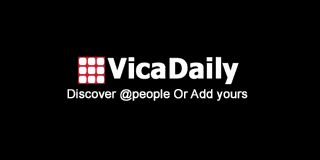Nuclear Licensing Process: Steps, Challenges, and Best Practices

Introduction
The nuclear licensing process is a critical step in ensuring that nuclear facilities operate safely and within regulatory frameworks. It involves obtaining approval from regulatory authorities to construct, operate, or decommission a nuclear facility. The process ensures that all safety, environmental, and operational standards are met to protect public health and security.
In this article, we will explore the steps involved in nuclear licensing, the challenges faced, and the best practices for a successful licensing process. We will also discuss how Nuclear Licensing and Regulatory Support services, like those provided by Certrec, can simplify the licensing process for nuclear facilities.
Steps in the Nuclear Licensing Process
The nuclear licensing process follows a structured approach that includes multiple steps, each requiring compliance with strict regulatory requirements.
1. Pre-Application Stage
Before submitting a formal application, organizations must conduct pre-application discussions with regulatory agencies, such as the U.S. Nuclear Regulatory Commission (NRC). During this stage:
-
Companies engage in early consultations with regulators.
-
They identify potential regulatory requirements.
-
A licensing strategy is developed.
-
Feasibility studies and risk assessments are conducted.
Early engagement with Nuclear Licensing and Regulatory Support services, like those offered by Certrec, helps organizations identify challenges and streamline the application process.
2. License Application Submission
Once the pre-application phase is complete, the organization submits a formal license application to the regulatory authority. This submission includes:
-
A detailed Safety Analysis Report (SAR).
-
Environmental Impact Assessments (EIA).
-
Emergency preparedness plans.
-
Security and risk management strategies.
-
Design and operational details of the nuclear facility.
Regulatory agencies review the submission to ensure compliance with safety and security regulations. Certrec provides expert assistance in preparing and reviewing these documents to enhance the chances of a successful application.
3. Regulatory Review and Public Consultation
After submission, the regulatory authority conducts a detailed review of the application. This includes:
-
Technical evaluations of safety and environmental documents.
-
Public consultations to address community concerns.
-
Requests for additional information or modifications.
Public engagement is a critical part of the process, as it helps build trust and transparency in nuclear projects.
4. License Approval and Issuance
If the regulatory review is successful, the authority grants a construction permit, operating license, or decommissioning license depending on the facility's purpose. However, approval is often conditional on meeting specific safety and security requirements.
5. Compliance and Monitoring
Once a license is issued, nuclear facilities must adhere to regulatory conditions. This involves:
-
Regular safety inspections and audits.
-
Regulatory reporting on operational performance.
-
Compliance with safety, security, and environmental standards.
Companies must maintain open communication with regulators to ensure continued compliance. Certrec offers Nuclear Licensing and Regulatory Support to help facilities manage ongoing compliance and regulatory updates.
6. License Renewal or Decommissioning
Nuclear facilities operate under time-limited licenses, requiring periodic renewals. If a facility reaches the end of its operational life, it must undergo a decommissioning process that ensures safe dismantling and environmental restoration.
Challenges in the Nuclear Licensing Process
The nuclear licensing process presents several challenges that organizations must navigate:
1. Complex and Lengthy Regulatory Procedures
The licensing process involves extensive paperwork, safety analyses, and compliance verifications, which can take years to complete. Any delays can result in significant financial and operational setbacks.
2. Changing Regulatory Requirements
Regulatory frameworks continuously evolve, requiring applicants to stay updated on new rules and compliance expectations. Organizations that fail to meet updated regulations may face application rejections or operational shutdowns.
3. Public and Stakeholder Opposition
Public concerns over nuclear safety, environmental impact, and radiation risks can lead to opposition. Managing community relations and providing transparent information is essential to gaining public trust.
4. High Costs and Resource Requirements
The nuclear licensing process requires significant financial investment, including hiring experts, conducting risk assessments, and maintaining compliance. Companies without proper resources may struggle to meet licensing requirements.
5. Technical and Safety Challenges
Ensuring nuclear safety is paramount. Facilities must demonstrate their ability to handle nuclear materials, waste management, and emergency response procedures effectively.
Best Practices for a Successful Nuclear Licensing Process
1. Engage with Regulatory Experts Early
Working with experienced Nuclear Licensing and Regulatory Support professionals, like those at Certrec, can help companies navigate complex regulations, prepare proper documentation, and reduce delays.
2. Maintain Transparent Communication
Effective communication with regulatory agencies and the public builds trust and reduces resistance. Providing accurate information about safety measures and environmental protections is essential.
3. Use Technology for Compliance Management
Utilizing advanced compliance software and digital documentation can improve efficiency in the licensing process. Certrec offers cutting-edge regulatory solutions to help manage compliance seamlessly.
4. Conduct Thorough Risk Assessments
Identifying potential safety, environmental, and operational risks early helps companies develop robust mitigation plans and avoid regulatory rejections.
5. Stay Proactive with Regulatory Updates
Organizations must stay informed about changing regulations and proactively adjust their compliance strategies to meet new requirements.
How Certrec Supports the Nuclear Licensing Process
Certrec is a trusted provider of Nuclear Licensing and Regulatory Support services. With decades of experience in nuclear compliance, Certrec helps organizations:
-
Navigate the complex nuclear licensing process efficiently.
-
Prepare high-quality documentation for regulatory approvals.
-
Manage compliance and regulatory reporting seamlessly.
-
Implement advanced regulatory software solutions.
-
Address public and stakeholder concerns effectively.
By leveraging Certrec’s expertise, nuclear facilities can streamline their licensing process, reduce delays, and ensure full compliance with regulatory requirements.
Conclusion
The nuclear licensing process is essential for ensuring the safe and compliant operation of nuclear facilities. While the process is complex and challenging, organizations can improve their success rates by engaging with Nuclear Licensing and Regulatory Support professionals like Certrec. By following best practices, maintaining transparent communication, and staying proactive with regulatory requirements, companies can achieve smooth and efficient licensing approvals.
For expert guidance and support, Certrec is a trusted partner in nuclear regulatory compliance, offering solutions that streamline the licensing journey and ensure regulatory success.
FAQs
1. What is the nuclear licensing process?
The nuclear licensing process is a series of steps required to obtain regulatory approval for constructing, operating, or decommissioning a nuclear facility. It ensures compliance with safety, security, and environmental regulations.
2. How long does the nuclear licensing process take?
The process can take several years due to extensive regulatory reviews, safety assessments, and public consultations. Proper planning and expert guidance can help reduce delays.
3. What challenges do companies face in nuclear licensing?
Common challenges include complex regulations, public opposition, high costs, changing compliance requirements, and technical safety concerns.
4. How can Certrec help with nuclear licensing?
Certrec provides Nuclear Licensing and Regulatory Support services, including regulatory consulting, compliance management, documentation preparation, and stakeholder engagement, to help organizations successfully navigate the licensing process.
5. What are the key documents required for nuclear licensing?
Essential documents include a Safety Analysis Report (SAR), Environmental Impact Assessment (EIA), security and emergency plans, and compliance reports.






